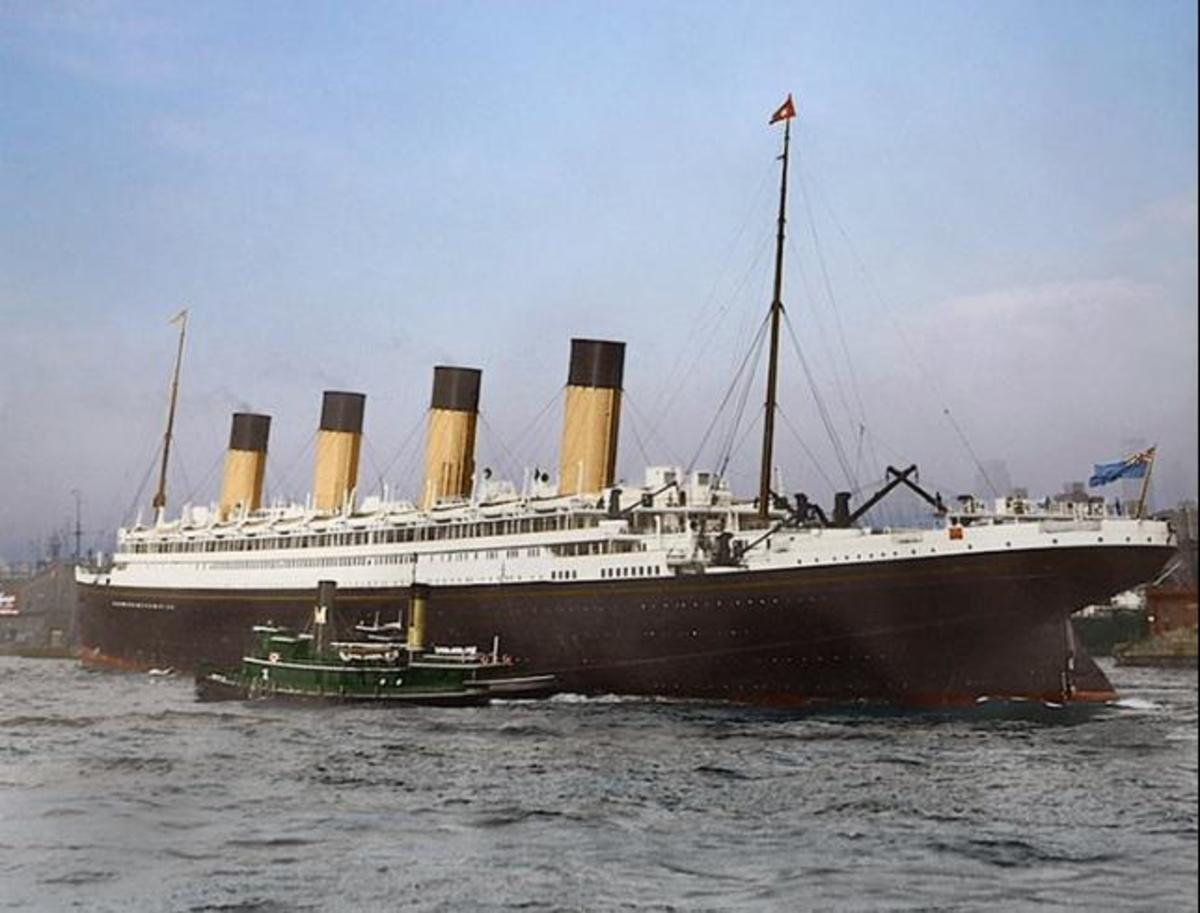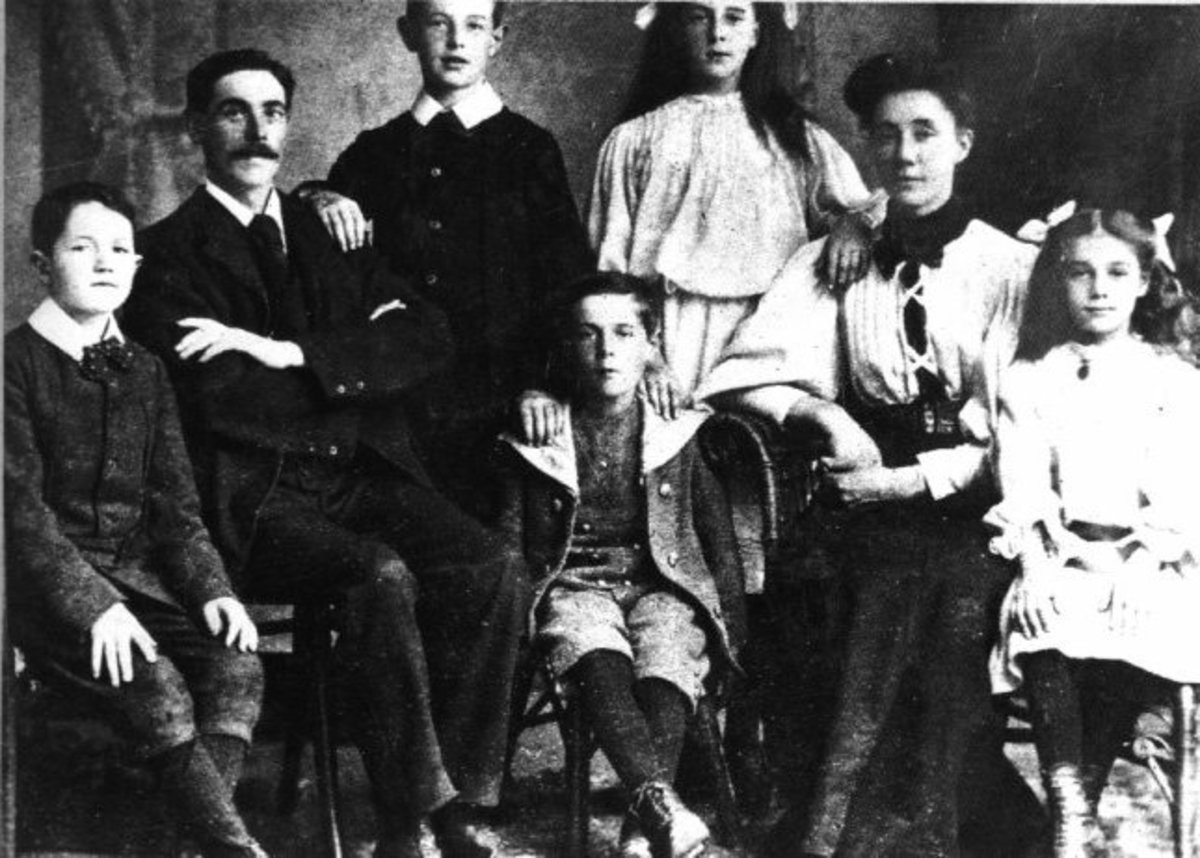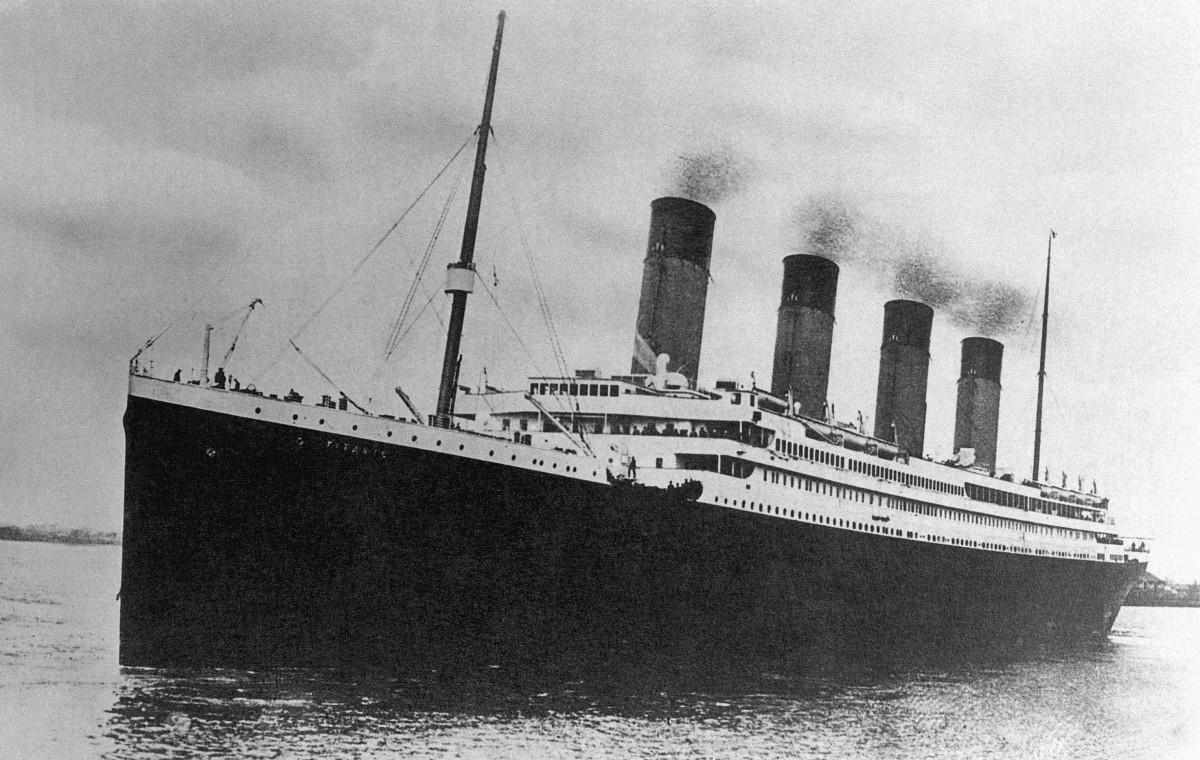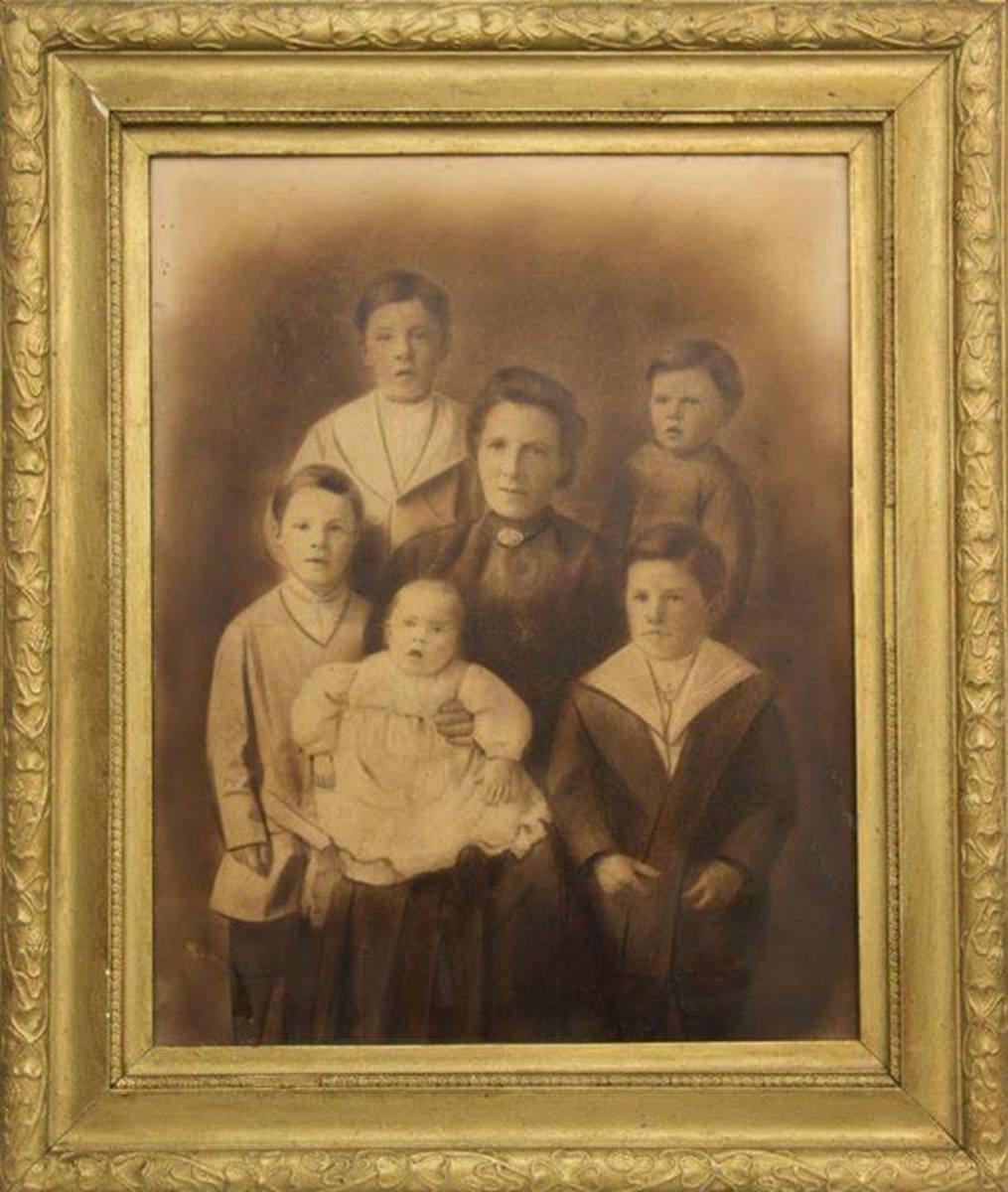Why Did the Titanic Sink?
Bad Luck On The Titanic's First Voyage
When the Titanic sailed from Southampton England for New York City, she had more than 2000 passengers on board, which included wealthy industrialists. The Titanic had a length of nearly 270 meters and weighed just over 46,000 tons, designed by the well known ship designer Thomas Andrews. On this her first voyage, she would stop in France and Ireland before sailing on to America.

This Ship Was Supposed To Be Unsinkable
The Titanic was built with compartments that could easily be sealed off. Even if two or three compartments flooded, it should take two to three days for her to sink, which left sufficient time for the passengers to be rescued. Even before they sailed, everybody talked about the ship that could not sink..
At 7.39pm in April 1912, the Titanic’s wireless operator heard a message from the steamer Californian, reporting the location of three large icebergs, which was eight kilometers south of them. This was the first of several ice warnings the Titanic received that day. However, the ship continued to rush through the darkness. There was no moon and the ocean was quiet. If the wind had blown, the foam from the waves breaking against the ice would have shown by twilight. Two of the ship's lookouts sat high in the crow’s nest as they surveyed the ship's progress and watched for obstacles like icebergs or other ships. With temperature around freezing, they hugged themselves closely.
An Iceberg Ahead
About 160 kilometers south of the Grand Banks of Newfoundland at approximately 11.40 pm, Frederick Fleet, who was a lookout on the ship, noticed that ahead on the horizon, the stars were starting to disappear. He then noticed a shape, a few hundred meters away. He sprang up and rang the crow’s-nest bell and phoned the bridge, crying, “Iceberg right ahead.”

The Captain and The Designer Assessed The Damage
The ship turned slowly, and began to slide past a wall of ice, moving past the starboard railing. But then the ice struck and to many it didn’t seem such a hard smash, and nobody seemed to worry. The ice disappeared into the darkness in seconds. Between the bow and mid ship, in a sweltering boiler room, a geyser of water was drenching stokers as they leapt through a quickly closing watertight door. In the adjoining compartment, water was also flowing in. When Captain Smith and the designer, Thomas Andrews assessed the damage that the iceberg had caused, they were filled with foreboding. It had damaged the first six watertight compartments. When filled with water, the weight of the damaged compartments would pitch the ship forward. The bulkheads of some of the “watertight,” compartments extended only a couple of meters and the top of the compartments weren’t watertight. As each compartment filled, water would spill over to the next compartment because the Titanic now had a nose down tilt. They agreed to evacuate the ship.
Terror As The Ship Goes Under
As water started to fill the ship, the pitch worsened and the propellers lifted free of the water. With a screech of tearing metal, the forward smokestack broke off and fell over into the ocean. The first lifeboat was lowered at 12.25am. But there were only lifeboats for half of the people. A luxury ship, and yet in an emergency only half the people could be saved. The ship was big enough, plenty of space for more life boats. Imagine the terror of those poor people, in the middle of the night, in the darkness and freezing conditions. The largest ship ever built, designed to take at least two days to sink, settled to her grave in less than three hours. The lessons learned from this disaster, changed the way that shipping companies would deal with sufficient lifeboats, ship design and communications.
Over One Thousand People Perished
After 2am, with the ship upended to about 45 degrees, those in the lifeboats heard a deep rumbling. The stern appeared to rise and then the stern began to slip downward. At 2.20, the Titanic vanished beneath the surface, carrying with her more than one thousand people, including the rich industrialists, Andrews and Captain Smith.
Massive Damage From a Sideswiping Iceberg
Nobody had foreseen the massive damage a sideswiping iceberg could do. They speculated that the iceberg must have pushed in the hull’s huge plates and popped the rivets, pulling the ship apart at the seams. However, when compared with the reports of damage which was seen before the ship went down, and considering the speed at which the ship sank, many felt that the theory did not add up.
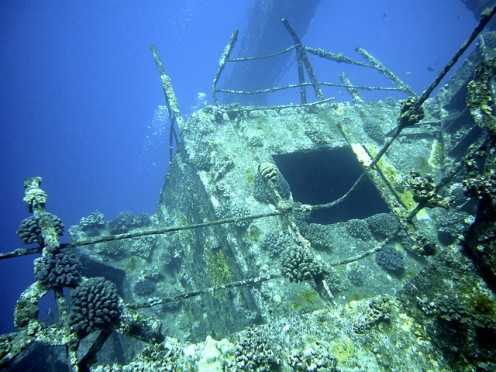
The Titanic Is Found
Then in September 1985, marine geologist Robert Ballard found the Titanic. Unfortunately he could not see the damage left by the iceberg, as the ship lay in two sections, stern and bow, and the damaged part of the bow had plowed into a twelve meter mud bank when the Titanic hit the bottom of the ocean.
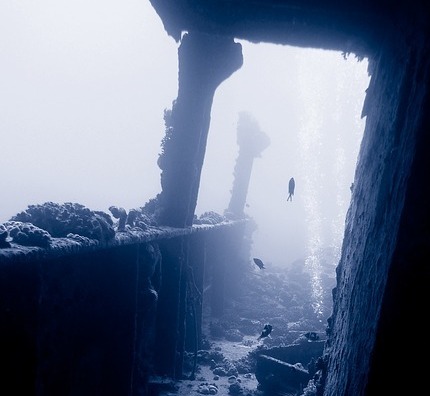
Scientists and Engineers Visit The Site
In 1991, a team of scientists and engineers visited the site. The leader of the expedition was Steve Blasco , a Canadian marine geologist. The vehicles they used were a pair of submersibles capable of staying at great depths for twenty hours or more.

Scientists Find Part of The Hull
The scientists discovered a chunk of what looked like part of the hull. The disc was 25 centimeters in diameter, and was about two centimeters thick, with three rivet holes each about three centimeters across. Back on board their ship, the piece was dried and carefully cleaned. They were surprised to see remnants of the original paint, as having been underwater for decades, it should have been severely corroded.
In The Halifax Testing Lab
Three years later, in the Halifax testing lab, the chunk of the Titanic is to be tested, over a century after it sank.The metallurgist in charge is Ken KarisAllen who is a specialist in fractures and corrosion. The method is simple, as a coupon is held tightly against a steel holder, the 30 kilogram pendulum swings down and thumps against the sample, sometimes breaking it. The point of contact is connected to instruments that document the force in microsecond detail.
Steel of The Titanic Is Tested
He will test two coupons, one made of steel used in modern ships, the other, a slice from the Titanic. Both are resting in a bath of alcohol at about minus two degrees, which stimulates the water temperature of that night over a century before. KarisAllen must rush the test piece from the bath to the holder in five seconds.
Confirmation That The Titanic's Steel Was Brittle
He pulls the pendulum into place. Whisking the modern coupon from the bath to the holder, he reaches for a red release handle and pulls. The pendulum swings down and thuds to a halt. The test piece has been shaped into a ‘v.’ He repeats the procedure with the Titanic sample. This time, the pendulum strikes the piece with a sharp ping, hardly slows, and continues on its upswing while the sample, broken in two, sails across the room. Tracings on the computer screen and subsequent analysis confirm that the steel of the Titanic is exceptionally brittle.
In 1911 They Did Not Understand The Concept of Brittle Fracture
When the ship hit the iceberg, the hull plates didn’t simply bend inward, they fractured. The titanic sample is not brittle from lying on the ocean floor for most of a century. It is a metallurgical match for a slug saved from the ship’s construction site in 1911. So the steel was brittle when it came from the plant, and it became even more brittle in the icy water. They didn’t understand the concept of brittle fracture a century ago. They didn’t know that a high sulphur content makes steel brittle. And Titanic steel was high even for the times and would never get passed today.
This content is accurate and true to the best of the author’s knowledge and is not meant to substitute for formal and individualized advice from a qualified professional.
© 2017 Anita Hasch

